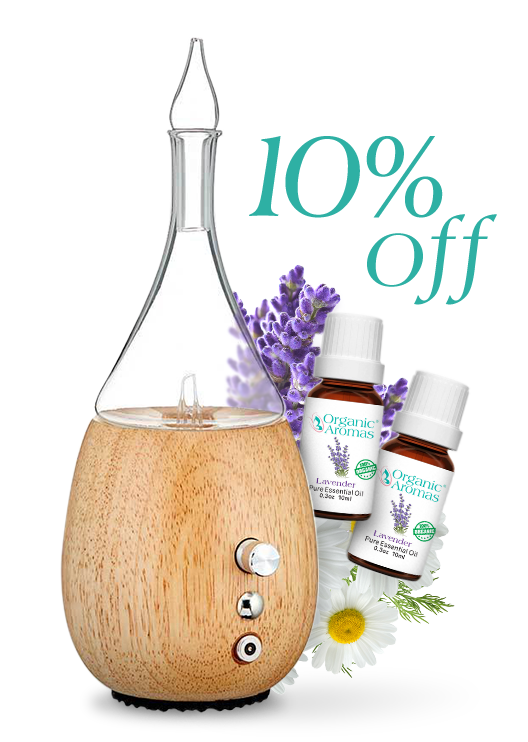Which Essential Oils Are Safe for Cats
Did you know that essential oils can offer numerous benefits for our feline friends when used correctly? This comprehensive guide will help you discover which essential oils are safe for cats and how to use them responsibly to enhance your pet’s well-being.
Key Takeaways
- It is important to use caution when using essential oils around cats, as they require dilution and specific usage methods.
- Tea tree oil should be avoided due to toxicity, while other unsafe oils must be researched beforehand.
- Veterinary guidance is necessary for safe and effective use of essential oils on cats. Almond oil can act as a gentle carrier oil for topical application.
Understanding Essential Oils and Feline Safety

Essential oils, including pure essential oils, are concentrated plant extracts that offer a wide range of health benefits, from reducing stress to providing anti-inflammatory properties. However, it’s necessary to handle certain essential oils carefully around our feline friends because cats are more vulnerable to these oils owing to their absence of specific liver enzymes. This sensitivity makes cats more susceptible to the toxic effects of some essential oils, such as tea tree and mint essential oils.
Before using essential oils on your cat, consider factors such as their size, weight, breed, age, and overall health. Seek advice from scientific research and opt for 100% pure, natural, and organic essential oils to ensure your cat benefits optimally without exposure to unnecessary chemicals or additives.
Navigating the World of Cat-Safe Essential Oils

While some essential oils can be toxic to cats, there are also cat-safe essential oils that offer great benefits when used properly. Maintaining correct dilution and safe usage methods is pivotal for your cat’s safety and well-being.
The Importance of Dilution
Mixing essential oils with carrier oils like almond or coconut oil is necessary for safe usage around cats. A common dilution suggestion is a high dilution of 1 drop of essential oil to 4 tablespoons of carrier oil or a low dilution of 2 drops of essential oil to a larger amount of carrier oil. Using undiluted essential oils can be hazardous, especially for cats with respiratory conditions like asthma, as inhaling diffused oils may cause respiratory distress and skin irritation or toxicity if ingested.
The optimal carrier oils for diluting essential oils for cats include coconut oil, almond oil, and V-6 Vegetable Oil Complex. Always monitor your cat for any adverse reactions when using diluted essential oils.

Sign Up to Get Your FREE Essential Oils e-Book Here
Methods of Safe Usage
A diffuser with a diluted mixture of essential oil to water and topical application in diluted form are safe methods of using essential oils for cats. Essential oil diffusers can help prevent overexposure by limiting the use of the diffuser to short periods of time, ensuring that essential oil droplets don’t settle on your cat. Lavender essential oil is extensively studied for use with cats when diffused. It is the most extensively researched essential oil in this regard.
For topical application, it’s important to use essential oils topically by diluting them in a carrier oil before being applied to your cat’s skin. Keeping cords from diffusers safely out of reach while using them around cats prevents spills. Otherwise, your cat could be exposed to more essential oils than intended.

Sign Up to Get Your e-Book Here
[wpforms id=”57583″ title=”false”]Recognizing Unsafe Essential Oils for Cats
Tea tree oil is the most dangerous essential oil for cats, as it can cause severe adverse reactions such as ataxia, lethargy, salivation, tremors, and comas. Cats are more sensitive to essential oils than humans due to their lack of certain liver enzymes responsible for breaking down a variety of substances. Essential oils are gaining popularity among people. Some worth mentioning are bay, bergamot, birch, cinnamon, citronella, citrus, clove, eucalyptus, fir, juniper, mint, pennyroyal, peppermint, pine, wintergreen, and ylang-ylang oils..
To ensure your cat’s safety, avoid these essential oils toxic to cats and focus on using essential oils safe for cats, always following the appropriate guidelines and precautions to use essential oils safely.
Symptoms Indicative of Essential Oil Poisoning

If your cat is exposed to toxic essential oils, they may exhibit symptoms of essential oil poisoning, such as vomiting, lethargy, and respiratory distress. Immediate veterinary attention is necessary if your cat shows these symptoms, as it could be a sign of essential oil toxicity. Provide your veterinarian with information about the type of oil that caused the reaction and the form of exposure, such as licking, skin contact, or inhalation.
Monitoring your cat for any adverse reactions to essential oils is important, as early detection and intervention can help prevent potential health issues.
Responding to Essential Oil Emergencies
In case of essential oil poisoning, it’s necessary to contact your veterinarian or an emergency animal hospital immediately. Providing details about the oil and exposure method will help professionals assess the situation and provide the necessary treatment for your cat. If your cat has ingested essential oils, seek professional assistance right away, as this can lead to severe health issues.
Your veterinarian may conduct a physical examination, blood tests, and evaluate the impact of poisoning on your cat’s liver. They may provide oxygen support, insert an IV drip, or take other measures to eliminate the toxins and ensure your cat’s recovery.
Alternatives to Essential Oils for Pet Environments

If you’re looking for pet-safe alternatives to essential oils, consider using:
- Leucillin spray
- Manuka honey
- Pet-safe colloidal silver gel
- Simmer pots
- Rosemary water
These options can help create a pleasant environment for your cat without the risks associated with essential oils.
Simmer pots, for example, involve simmering water, spices, and other aromatic ingredients on the stove to generate a pleasant scent in the home. By incorporating pet-friendly ingredients, you can enjoy a fragrant home without exposing your cat to potentially hazardous essential oils.

Join Now and Get a Coupon for 10% Off!
The Role of Veterinary Guidance in Using Essential Oils
Before using essential oils on or around your cat, consulting a veterinarian is necessary to ensure their safety and well-being. A veterinarian can evaluate the potential toxicity of certain oils, such as those containing phenols, which may cause liver failure and seizures in cats. Additionally, they can conduct studies to validate the effectiveness and safety of essential oil administration to cats.
Particularly, consulting a veterinarian before using essential oils on cats that are:
- pregnant or nursing
- aged
- have chronic health issues
- are kittens
is important. By seeking veterinary guidance, you can provide your cat with the benefits of essential oils without jeopardizing their health.
A Closer Look at Which Essential Oils are Safe for Cats
Geranium, thyme, and almond oil are examples of cat-safe essential oils that can offer unique benefits when used correctly and under veterinary guidance. It’s important to research and choose pet safe essential oils for all your furry friends.
Geranium Oil: A Natural Flea Repellent
Geranium oil, when diluted with a carrier oil, can be used as a natural flea repellent for cats. The primary components in geranium oil, such as citral and geraniol, act as natural repellents. To create a flea and tick spray for cats, you can combine 4 drops of geranium oil with one cup of water.
Moderate use of geranium oil is necessary and ensuring it is safe for external use on cats is important. By using geranium oil as a flea repellent, you can help protect your cat from these pesky invaders in a natural and effective way.
Thyme Oil: Antimicrobial Properties
Thyme oil is known for its antimicrobial properties, which have been shown to be effective against both gram-positive and gram-negative bacteria. It contains compounds such as carvacrol and thymol, which possess antimicrobial properties and have been found to be effective in combating multidrug-resistant bacteria. While there is no evidence to suggest that thyme oil can treat any specific infections in cats, its antimicrobial properties may be beneficial in certain cases when used safely and under veterinary guidance.
However, caution is required when using essential oils like thyme oil around cats, as not all essential oils are safe for feline use. Always consult a veterinarian before using thyme oil or any other essential oil on your cat.
Almond Oil: A Gentle Carrier Oil
Almond oil is a gentle carrier oil that can be used to dilute essential oils for safe topical application on cats. It is safe for external use and known for its moisturizing and healing properties, making it suitable for use on cats’ skin and fur. The advised ratio for using almond oil to dilute essential oils for cats is 1 drop of essential oil to 4 tablespoons of carrier oil.
While almond oil is generally safe for cats, some could be allergic or sensitive to it, so monitoring for any adverse reactions when using almond oil with your cat is necessary. By using almond oil as a carrier oil, you can ensure that essential oils are applied safely and effectively to your cat’s skin.

Maintaining a Safe Environment for Cats Around Essential Oils
For your cat’s safety around essential oils, store the oils out of reach, use them in low concentrations, and monitor your cat’s reaction to the oils. Signs of a cat’s adverse reaction to essential oils may include drooling, pawing at the face, difficulty breathing, watery eyes and/or nose, coughing, or wheezing. If you observe any of these symptoms, seek veterinary assistance immediately.
Controlling the concentration levels of essential oils in your cat’s environment is also important. Use heavily diluted essential oils and diffuse them at very low concentrations, avoiding areas frequented by your cat and limiting the duration of diffuser use. By taking these precautions, you can enjoy the benefits of essential oils while ensuring a safe and comfortable environment for your cat.
Summary
Essential oils can offer numerous benefits for cats when used safely and responsibly. By understanding the risks, recognizing unsafe essential oils, and consulting with a veterinarian, you can provide your cat with the advantages of essential oils without jeopardizing their health. Remember to dilute essential oils, use them in low concentrations, and monitor your cat’s reactions to ensure a safe and comfortable environment for your beloved feline friend.

Join Our Exclusive Member Club to get Big Discounts!
Frequently Asked Questions
Can I spray my cat with essential oils?
It is generally advised to avoid diffusing essential oils around cats as they can absorb the oils through their skin and it can potentially cause liver damage or even liver failure. Additionally, many essential oils are poisonous to cats and can be toxic with both ingestion and skin exposure. Thus, it is not recommended to spray your cat with essential oils.
Is peppermint oil toxic to cats?
Peppermint oil is toxic to cats, both when ingested and when inhaled. Skin exposure can also be dangerous. Birds are also at risk of toxicity due to this essential oil.
Is eucalyptus oil safe for cats to smell?
Eucalyptus oil and other essential oils can be toxic to cats when ingested, inhaled or exposed to their skin for a prolonged period of time. Therefore, it is generally recommended to avoid using eucalyptus essential oil around cats, as it can cause adverse health effects.
Essential oils that are safe for dogs?
To ensure safety for you and your pet, it’s best to work with a vet trained in essential oils use when selecting safe essential oils for your dog.
My cat has ingested essential oil. What should I do?
Take your cat to the nearest veterinarian or emergency veterinary hospital, or contact the ASPCA animal poison control right away for professional assistance.


